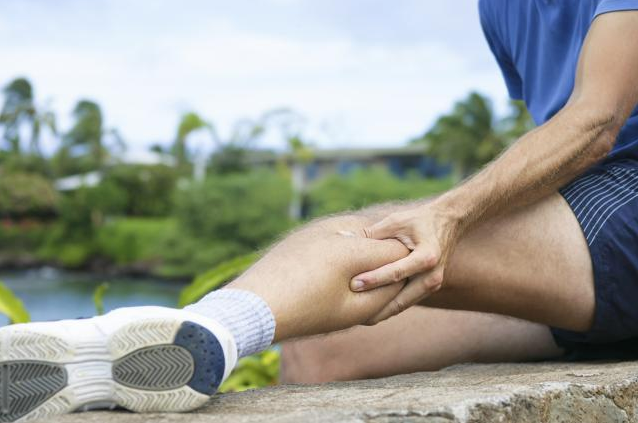Dealing with Calf Strains

Calf strains usually occur because of over-stretching the lower leg, usually due to quick movements or a jumping motion. Physical therapy can ease swelling, and help heal a calf strain.
There are 3 Categories of Calf Strains
Grade one tear:
- A small number of muscle fibers are injured. (Around 10%)
- May be able to carry on activity.
- Usually retain full function
Grade two tear:
- A sizable amount of muscle fibers are injured. (Around 30-85%)
- May be able to carry on activity with noticeable discomfort.
- Function obviously hindered
Grade three tear:
- Most or all muscle fibers are injured. (Around 90-100%)
- Sharp pain will inhibit continuing activity.
- Movement will be severely limited, or impossible. ‘
Recovery time may vary, and grade three tears can often require surgery. For grade one and two tears physical therapy can improve recovery.
Calf strains are most commonly associated with sports or activities that require quick changes of direction or accelerating from a standing position. Tennis, soccer, football, and running are examples. In these injuries, one of the nine muscles in the lower leg is overstretched and torn to some degree.
Tears can stem from normal wear and tear, continuous jumping, and over-stretching the muscle by lunging or slipping. Age can also be a factor in severity and susceptibility of calf strains.
Common treatments of strained calves are:
- Rest
- Compression
- Range of motion stretching exercises
- Progressive calf stretching
- Foam rolling
- Achilles tendon stretching
- Icing
Stretching and warming up properly can reduce the risk of muscle injuries. Start with an aerobic exercise to warm up the muscles. Stretching cold muscles can lead to injury. Follow your warm up with short controlled dynamic stretches.
Examples of Dynamic stretching:
- Butt Kickers – jogging forward and extending your legs as they trail as if you are trying to kick your own behind.
- High Knees – jogging forward and leaning back slightly to bring your knees to your chest in a controlled motion.
Rehabilitation cannot start until you visit your doctor. Contact a doctor or physical therapist before attempting treatment or returning to activity after suffering an injury.
To learn more visit our website www.moriartypt.com or call us at 845.454.4137.
Sources:
Bryan Dixon J. Gastrocnemius vs. soleus strain: how to differentiate and deal with calf muscle injuries. Curr Rev Musculoskelet Med. 2009;2:74–77.
Campbell JT. Posterior calf injury. Foot Ankle Clin. 2009;14(4):761–771.